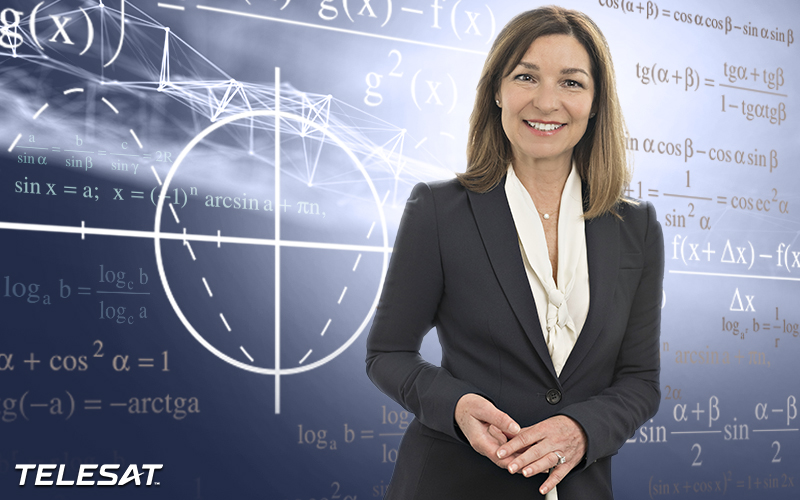Earlier this month I was proud to be a keynote speaker at the 2023 Space4Women Expert Meeting, held this year in Montreal. Space4Women was organized jointly by the United Nations Office for Outer Space Affairs (UNOOSA), and the Canadian Space Agency (CSA). Space4Women was established to encourage women and girls to pursue Science, Technology, Engineering, and Mathematics (STEM) education, and the event raises awareness about career opportunities and the importance of gender equality and empowerment in the space sector.
While I was humbled to be invited to speak, my background illustrates the possibilities of this exciting field. I am woman, an engineer and a senior vice president of a successful, global, space-based, engineering-focused company. I admit I had advantages not available to all.
From a young age I was a good student and I excelled in mathematics and sciences. In my high school physics class, I was captivated by electrical circuit theory. That led me to pursuing electrical engineering studies and an eventual career in the field of telecommunications. Unlike many young students, I had a clear path laid out and was fortunate to have parents who encouraged me to pursue a STEM career and supported me financially.
Upon completing my university degree, I was immediately hired by Telesat and was the first female satellite communications engineer in the company. I worked on several high-profile projects including the build-out of our teleport infrastructure and turning up satellite distribution services for networks like CTV, CBC and all the new pay TV channels. We introduced satellite distribution of High Definition Television (HDTV) and developed Direct-to-Home satellite services. I travelled across Canada and the US. It was exciting and interesting – but I wish my career arc was much more common in the space industry.
There are undeniable benefits from having a diverse workforce. Studies have shown that diverse teams outperform homogenous ones, bringing enhanced creativity, problem-solving abilities, and a more inclusive work environment, in addition to broader business prospects. This is another reason I’m proud to work at Telesat.
Our first Women in STEM Scholarship Program launched in 2021. It supports women pursuing STEM careers, providing not only financial assistance but also mentorship and internship opportunities to nurture and empower young talent. Through this annual program, Telesat awards scholarships annually to eight women who are studying in the STEM field through an accredited Canadian university or college.
We have also launched a new Fellowship Program that focuses on Indigenous youth in STEM, opening doors for them to explore careers in technology, satellite communications and satellite engineering. Two annual scholarships are available at the bachelor’s degree level. In addition to the scholarship funds, recipients are also eligible for a $15,000 stipend and a paid internship at a Telesat office or teleport. In addition to these post-secondary programs, we are also targeting grade school programs to expose children to STEM. Such awareness needs to be promoted earlier.
The vitality and tone of the Space4Women meeting this year reflected a heightened awareness of how a focus on STEM enriches both individual careers and a nation’s economy. Some attendees visiting the CSA exhibition floor seemed surprised that Canada has such a thriving space industry. Some of the conversations reinforced that some basic and seemingly small changes in procedure can have a large impact on attracting more women to a space career.
For example, one of the chairpersons of the National Sciences and Engineering Research Council of Canada (NSERC) shared that they had developed an encoder that can review job postings and detect if it is “coded” as a male opportunity rather than female. Another attendee noted this is especially challenging when the job posting is in French since all French nouns are either masculine and feminine.
This kind of bottom-up review of processes, along with the kinds of programs and outreach Telesat is engaging in, are proven ways to increase diversity and opportunity in the space industry. Progress has been made since I started my career, but we can all do more to build a future where every young woman feels inspired, supported, and empowered to reach for the stars in STEM. It’s one of the best investments we can make to ensure the industry remains a source of economic strength and equality.



